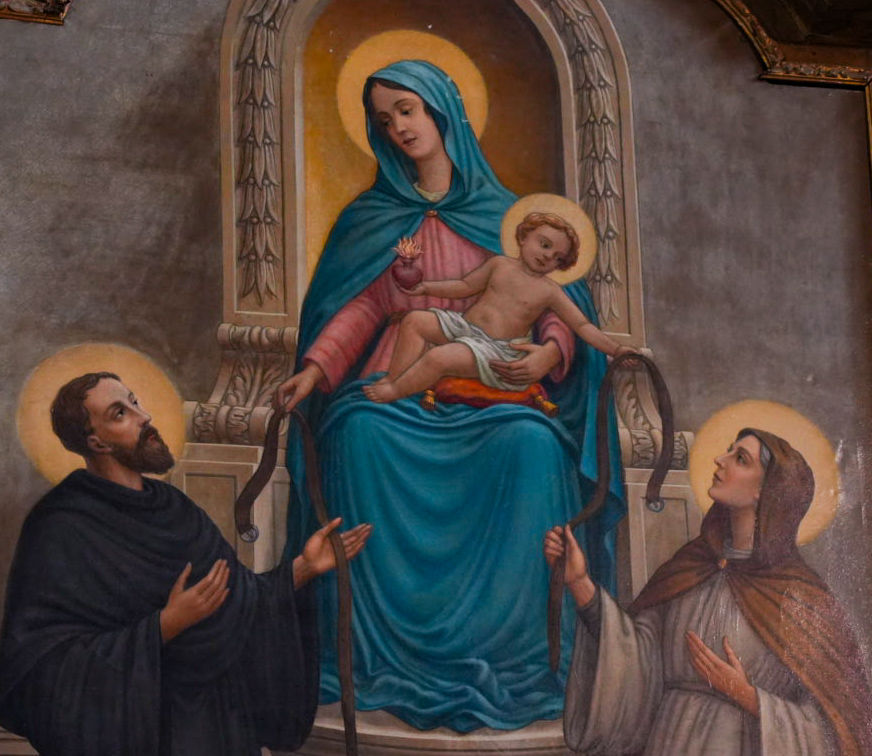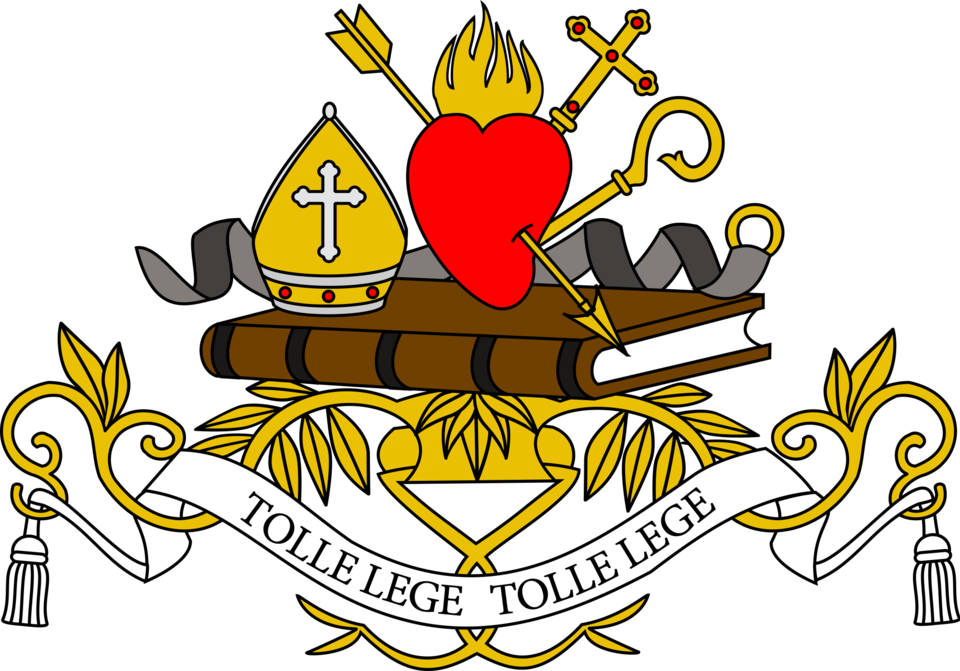The Servant of God, Sr. M. Maddalena Renzi
- Damiano Neri
- Aug 13
- 5 min read
Updated: Aug 16
The events narrated in the previous chapter have allowed us to glimpse that, within the walls of the Monastery of the Holy Cross during this period, there must have dwelt truly heroic souls. The brevity of these historical notes allows me only to briefly touch on the life and virtues of the foremost among them, the Venerable Sister Maria Maddalena Renzi.
This Servant of God was born on February 18, 1745, to Marco di Giovanni Renzi and Maria Angiola di Benedetto Borgiotti, of the parish of the Collegiate Church of St. Frediano in Cestello, Florence. On the same day, she was baptized in the beautiful church of St. John, and was given the name Maria Gaetana. The family seems to have been of modest social condition but guided by sound Christian principles. Her mother, in fact, was a woman of proven virtue, fully aware of her responsibility to raise her children in holy fear of God.
From the depositions, we learn that Maria Angiola—who was a penitent of that holy and experienced spiritual director, Father R. Franchi of the Filippo order—took great care to kindle in the young Gaetana’s soul a love for God and for virtue. She kept her in holy seclusion, shielded her from unnecessary contact with the world, and instilled in her the principles of religion. Aside from a marked inclination toward piety and a maturity beyond her years, nothing extraordinary distinguished Gaetana from other girls.
Like many children, she once fell into a common fault: one day, taking advantage of the absence of some neighbors who used to gather to braid straw, she stole a little straw and took it home, innocently showing her mother the “treasure” of a few strands as if they were something remarkable. Her good mother, Maria Angiola, reproved her severely, forcing her to return the straw in shame and ask forgiveness. She never forgot this event, and later in life, when praised for her virtues, she would sigh and say, “I was even a thief!”

Under her mother’s vigilant care, she grew from virtue to virtue. Prayer, obedience, and seclusion were the fields in which she worked tirelessly for her sanctification. Divine Providence smoothed her path to holiness even more by entrusting her to the spiritual direction of Father Franchi.
At the age of eighteen, she was struck by a serious and painful illness, from which she was suddenly cured through the intercession of the Blessed Virgin Mary, to whom she had turned on the advice of her confessor. Her aversion to the world grew stronger each day, as did her desire to give herself entirely to God.
Her religious vocation manifested itself clearly. She spoke to her confessor, who gave his consent, but only after long and difficult trials and after making her long for the cloister. Among the monasteries of greatest reputation near Florence at that time was that of the Holy Cross in Figline Valdarno. The many requests from young Florentine women wishing to join the Augustinian nuns there are proof of its esteem—further confirmed by the fact that a man as holy and austere as Father Franchi had chosen it for his penitent, Gaetana.
Father Franchi, a friend of the parish priest of Figline, Father Masselli, then confessor of the monastery, entrusted Gaetana to him in early 1770. For unknown reasons, she could not be admitted immediately and had to spend a few months in the parish priest’s house.
On October 31, 1770, Bishop Francesco Ginori granted permission for her to enter the monastery as a postulant. She actually entered on the 16th of that month, received the habit on February 3, 1771, and made her solemn vows on February 16 of the following year, as recorded by notary Arrigo Palmieri.
Her desire for perfection had called her to the cloister, and once there, she pursued virtue with great fervor. As a postulant, she quickly gained the esteem of all the nuns, and on December 22, 1770, when the community chapter was held to vote on her admission as a choir nun, all voted in her favor.
What distinguished Sister Maddalena as a fervent novice—and later as a perfect and holy religious—was her deep love for the virtue of humility. From this root sprang her great love of prayer, her ardent desire to suffer for Christ, her exemplary penance, and her blind and constant obedience, which at times seemed to compel Jesus to work miracles for her.
From the beginning, trials abounded. She suffered from the misunderstandings of her sisters, who, not yet recognizing the extraordinary gifts God had given her, were troubled by her frequent states of ecstasy, her delicate health, and her fainting spells. She endured spiritual dryness, distrust, demonic harassment—including terrifying apparitions and physical blows—and voluntarily shared in Christ’s Passion through severe penances, such as fasting, wearing hairshirts, and self-discipline, always in secret.
Her faith was vibrant and her hope unwavering, even during the persecutions of the monastery under Pietro Leopoldo I, when she was a source of courage for her sisters. She championed strict adherence to the rule, helping the nuns secure and live the perfect common life.
In poverty, she was rigorous—owning only the bare necessities in her cell, always wearing the most worn habit. Twice she was miraculously healed through the Virgin Mary’s intercession to avoid being examined by a doctor.
Her love for Jesus was so ardent that in her later years she seemed to live in a state of near-constant ecstasy, spending long hours before the Blessed Sacrament, sometimes alone, sometimes with her novices. She experienced mystical visions, seeing the Host as a globe of fire or surrounded by dazzling light, and was deeply grieved by restrictions that limited Communion to once a week without special permission.
Her devotion to Christ’s Passion led her to share physically in His wounds, even receiving a mystical piercing in her side and the pains of the crown of thorns, sometimes bleeding from her temples.
She also had an intense devotion to the Sacred Heart of Jesus, offering herself as a victim of love to make reparation for human ingratitude, and to the Blessed Virgin Mary, who rewarded her with miraculous healings and apparitions. Saints Aloysius Gonzaga and Mary Magdalene de’ Pazzi also appeared to her.
God granted her the gifts of prophecy, discernment of hearts, and knowledge of distant events. She foretold the death of Emperor Joseph II, the coming of peace to the Church under Ferdinand III, and even her own death in 1792, which occurred exactly as she had said, when the Church in Tuscany enjoyed a brief respite.
In her final illness, weighed down by pain, spiritual desolation, and the sense of abandonment by her Divine Spouse, she regained serenity upon receiving the Viaticum and Extreme Unction. To her confessor she said:
“Father, I am going to enjoy my Spouse Jesus; for Him, dying is sweet to me.”
Repeating tenderly, “Jesus, my Spouse, my Good, come for me!” she surrendered her blessed soul on the morning of November 20, 1792. (from the book, "Notize Sttoriche Intorno al Monastero della Croce delle Agostiniane in Figline Valdarno, pp. 33-39)


Comments